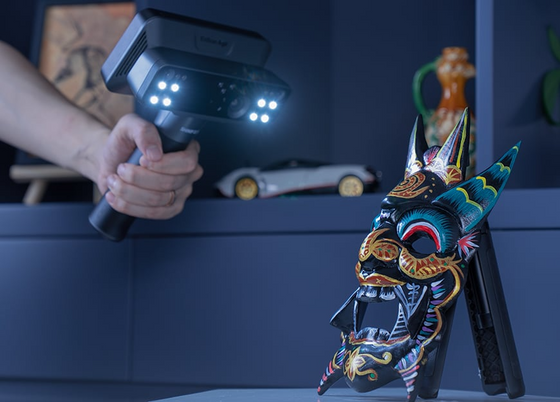Polypropylene and Water Soluble Supports
June 07, 2022
Polypropylene (PP) is a thermoplastic used in a variety of applications from the automotive industry to household products in your kitchen. Polypropylene exhibits robust characteristics such as high flexural strength and chemical resistance, however, printing with polypropylene can be challenging.
Since Polypropylene has a slippery surface, it can be difficult to bond to other materials impacting its ability to adhere to support materials. In this experiment, we will determine the compatibility between Ultimaker and BASF Polypropylene with water-soluble supports such as AquaSys 120 and BASF BVOH.
We decided to skip PVA (PolyVinyl Alcohol) and Breakaway support in our experimentation because Ultimaker has already performed extensive testing and research determining its incompatibility with polypropylene. Since BVOH and AquaSys 120 have always been considered experimental, we decided to put it to the test!
Testing Summary
| Material One (Polypropylene - PP) | Material Two (Support) | Printer | Format | Feasibility |
|---|---|---|---|---|
| Ultimaker PP | AquaSys 120 | Ultimaker S5 | 2.85 | Success |
| BASF PP | AquaSys 120 | Ultimaker S5 | 2.85 | Experimental |
| BASF PP | BVOH | Raise3D E2 | 1.75 | Fail |
Ultimaker:UM Polypropylene and AquaSys 120
The first test was using Ultimaker Polypropylene and AquaSys 120. AquaSys 120 is a water-soluble support filament that is highly rated in the 3D printing industry due to its fast dissolution and high performance with engineering-grade materials, resulting in a clean finish.
It was observed through our testing that this combination is successful and compatible. Post-processing simply includes filling a container with warm tap water and submerging your printed model. AquaSys 120 dissolves 6x faster than other leading brands of water-soluble supports allowing you to have a completed piece quickly. In the example below, after one hour of being submerged in water, the AquaSys material softens to a jelly consistency allowing you to easily remove the excess supports, resulting in a clean and smooth surface finish. AquaSys does not have any harsh chemicals, therefore the remaining water can be discarded freely.


Ultimaker: BASF Polypropylene and AquaSys
The second test was trying BASF- Ultrafuse Polypropylene and AquaSys 120. This combination unfortunately didn’t obtain the same results as our original test. When both of the materials were at optimal temperature, the layers appeared to adhere perfectly, however, when the temperature dropped, the materials began to repel and delaminate during the cooling process. Although there were no visible issues at the beginning of the print, this test ultimately lead to a print failure!


RAISE 3D: BASF POLYPROPYLENE AND BVOH
BASF Polypropylene and BVOH is the third test that was experimented. When initially using a raft, it was apparent that adhesion between the two layers was weak causing the filament to separate and clump up and around the nozzle.
 When the raft was removed, the print did follow through to completion, however, the surface quality had various blemishes that impacted the overall functionality of the mouse-cap print.
When the raft was removed, the print did follow through to completion, however, the surface quality had various blemishes that impacted the overall functionality of the mouse-cap print.
 Our Conclusions
Our Conclusions
Polypropylene is known for its very poor print surface adhesion. After conducting various tests, we can conclude that Ultimaker PP and AquaSys adhered the most consistent with the best surface quality. When testing BASF Polypropylene, it was noted that certain variants dictated the success rate of the print. This includes the size, temperature settings, and complexity of the 3D model, determining whether or not the layers will adhere or delaminate. Since this duo is inconsistent, it, unfortunately, remains experimental.
If you plan on using water-soluble supports with polypropylene it is recommended to reference the brand's printing settings/profiles and conduct small tests to determine printing success!
Also in News

Shop3D.ca at ADM Toronto (Advanced Design & Manufacturing Expo)
September 23, 2025
Shop3D.ca, Canada’s leading provider of 3D printing solutions, is proud to announce its participation in the Advanced Design & Manufacturing Expo (ADM), taking place October 21 – October 23, 2025, at the Toronto Congress Centre.

Shop3D.ca Open House: 3D Scanning with the EinScan Rigil
September 22, 2025
Join the Shop3D.ca technical team for an interactive demo of the new EinScan Rigil 3D scanner. Learn the ins and outs of professional 3D scanning, and bring a medium-sized object to scan. You’ll leave with your very own 3D model file—just make sure your item is light enough to handle and can be rotated during scanning.

Shop3D.ca at the Canadian Manufacturing Technology Show (CMTS)
September 10, 2025
Shop3D.ca, Canada’s leading provider of 3D printing solutions, is proud to announce its participation in the Canadian Manufacturing Technology Show (CMTS), taking place September 29 – October 2, 2025, at the Toronto Congress Centre.


